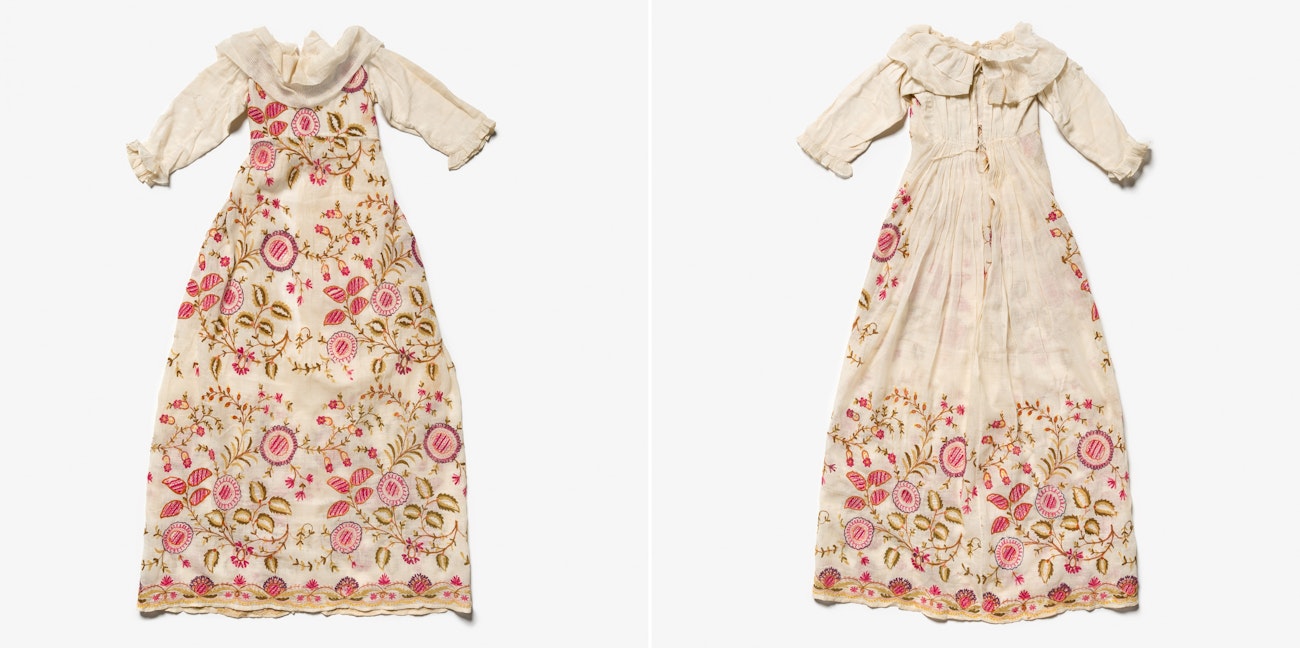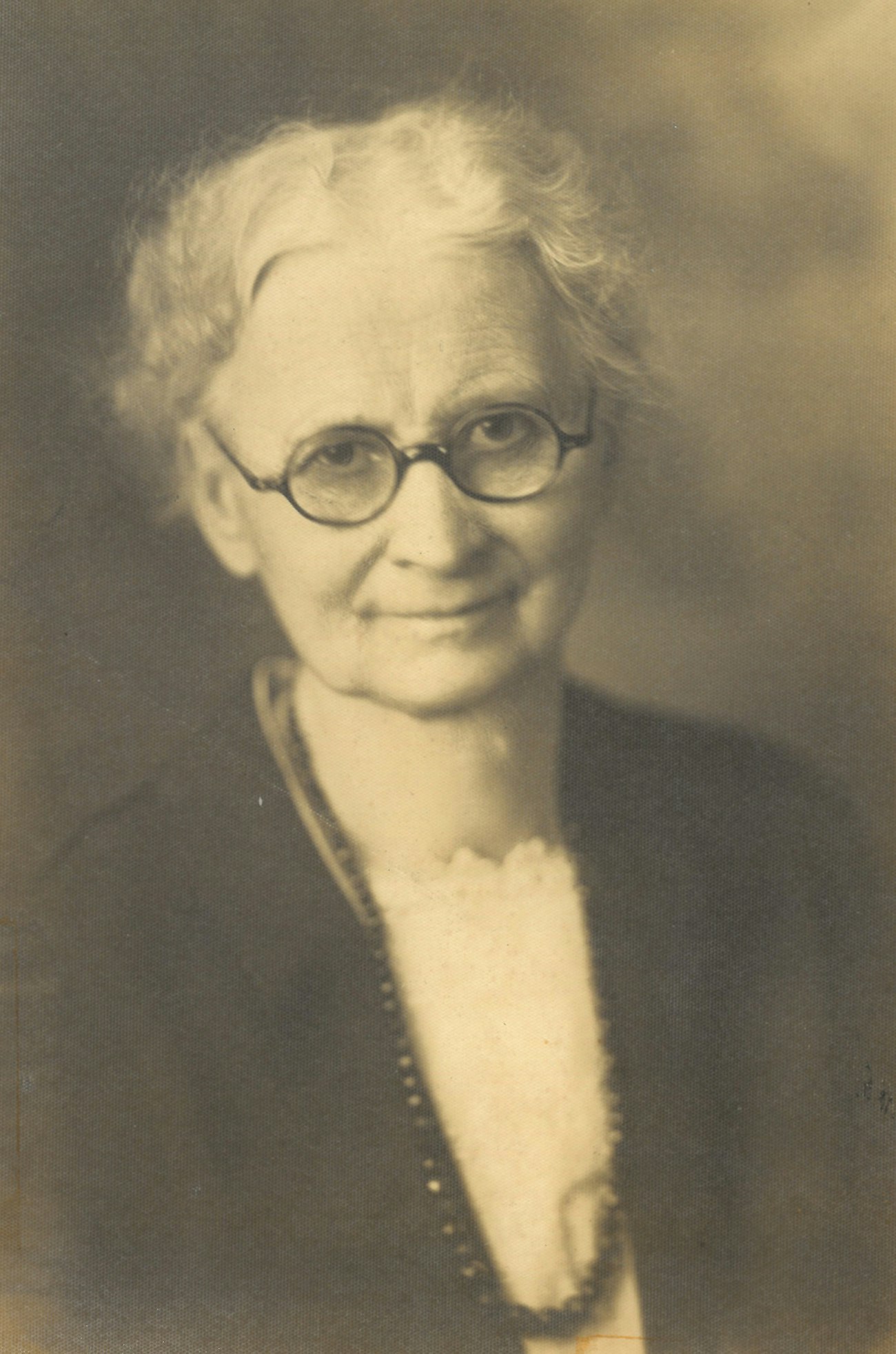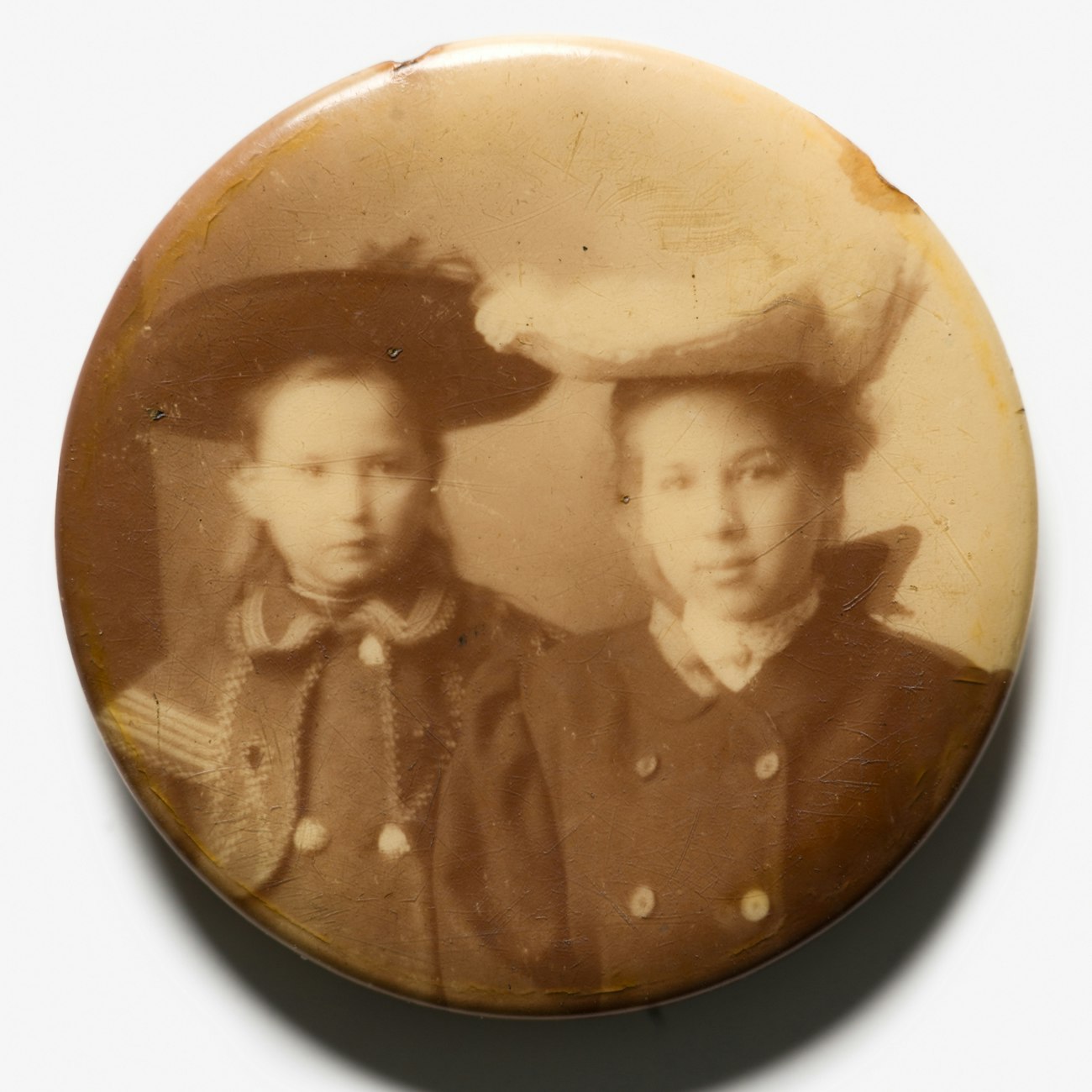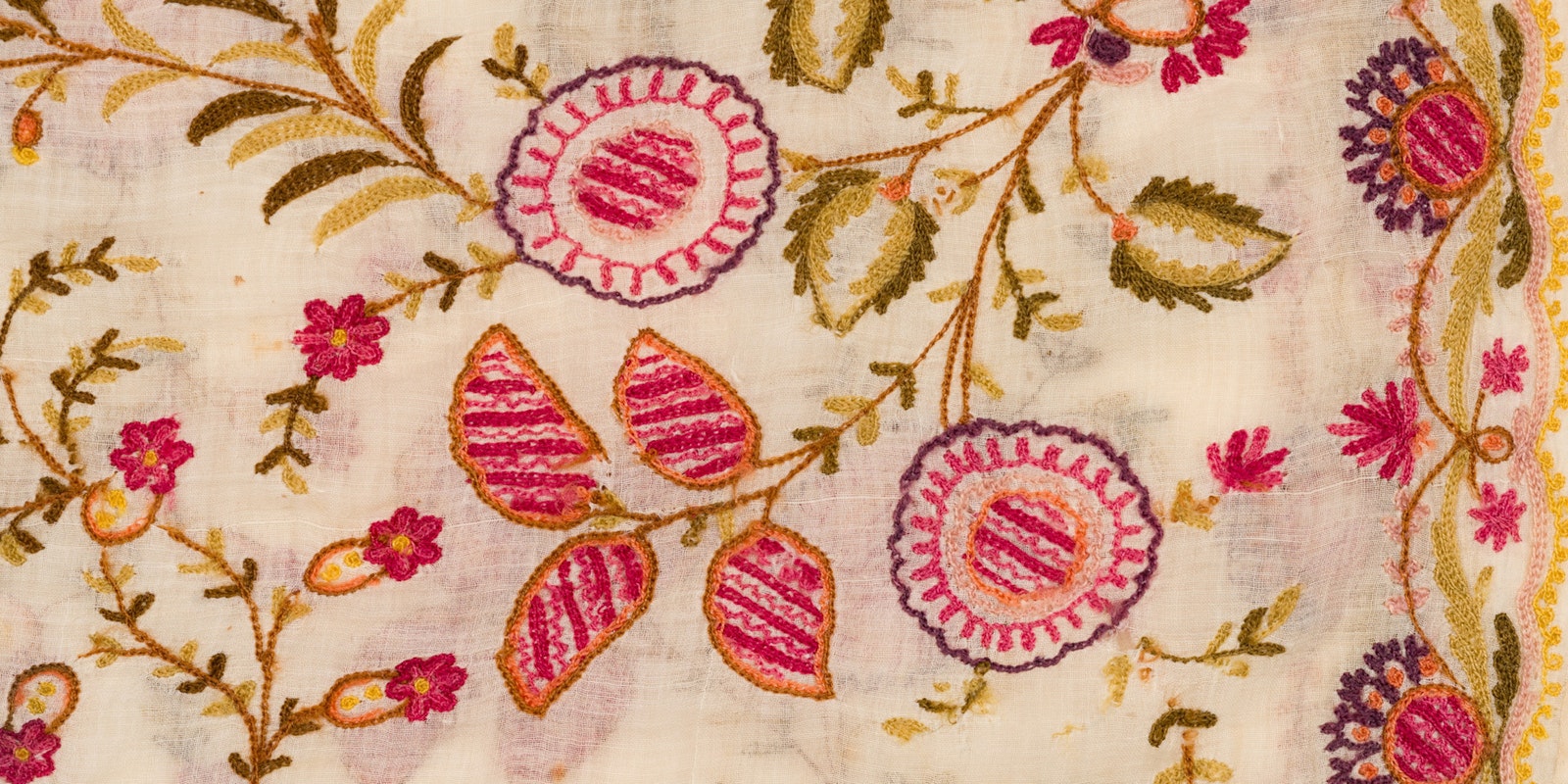Garments worn for special occasions make up a significant percentage of many museums’ collections because they are the textiles that people tend to save and pass along. Among the textiles associated with the birth of a child are garments worn at purification and naming rituals. In the Christian tradition, baptism purifies and welcomes the child into the church.
Long, white dresses, often with lace and self-fabric embellishments such as ruffles and pleats, have been common for baptism ceremonies in North America and Western Europe for almost 200 years. A baptismal dress that is covered with colorful embroidery is surprising. This delightful piece is in the collection of the Vesterheim National Norwegian-American Museum in Decorah, Iowa.
 Baptismal dress made by Pauline Sangvig in 1860. Vesterheim 2015.007.001. Gift of Paul Johnsen
Baptismal dress made by Pauline Sangvig in 1860. Vesterheim 2015.007.001. Gift of Paul Johnsen
The dress is 34 inches long (from back of neck to hem) and the skirt is 41 inches in circumference. Made from fine, white cotton fabric, the garment sports a variety of flowers and buds done in shades of burgundy, rose red, pink, orange, and yellow. Leaves are done in two shades of green, branches and stems in brown. All of the embellishment on the bodice and skirt is done in tambour embroidery with fine wool yarn. (Tambour embroidery is chain stitching made using a special hooked needle.)
Read more about tambour embroidery (“Aari and Tambour: A Transcontinental Relationship” by Nikita) in the Winter 2023 issue of PieceWork.
Pauline Christiansdatter Sangvig made the dress for her infant daughter Marie Anne Kristine to wear for her baptism on July 8, 1860, in Søgne, Vest-Agder, Norway. Søgne is a coastal community not far from the southernmost tip of the country. Marie’s father, Peder Cornelius Knudsen Sangvig, was a farmer and a skipper.
Marie grew up in Søgne. She married Theodor Torjussen—the owner and captain of a ship, a trader, and a farmer—in 1883. The Torjussens had five children. The daughters, Christine, Ellen, and Susanne, wore the dress at their baptisms in 1886, 1890, and 1896, respectively. We do not know if the two sons also wore it.
 Photograph of Marie Torjussen, 1920s. Photo courtesy of Vesterheim Archive
Photograph of Marie Torjussen, 1920s. Photo courtesy of Vesterheim Archive
Theodor died in 1897. Marie managed the household and supported the family as a merchant. The oldest son, Thorvald, left for the United States in 1903 to work as a marine engineer in Jersey City, New Jersey. The next year, the oldest daughter Christine and younger son Petter followed him. Marie, Ellen, and Susanne joined the family in New Jersey in 1905. Marie brought the dress with her to remember her mother, who had made it for her.
 “Innocents abroad. Fall of 1905. Our first American clothes!” Celluloid photo button of Susanne (left) and Ellen Torjussen. Vesterheim 2015.007.002. Gift of Paul Johnsen
“Innocents abroad. Fall of 1905. Our first American clothes!” Celluloid photo button of Susanne (left) and Ellen Torjussen. Vesterheim 2015.007.002. Gift of Paul Johnsen
Brightly colored baptismal caps, buntings, and dresses, often made from pieces of rich silk brocade or damask, were customary in many parts of rural Norway throughout the 1700s. White dresses started to be used, first in urban areas, in the 1830s. Marie’s dress, with its colorful embroidery on white cotton, illustrates a transition in the tradition of baptismal garments in Norway.
Laurann Gilbertson holds degrees in anthropology and textiles and clothing from Iowa State University. She has worked at the Vesterheim National Norwegian-American Museum for 32 years and is currently its chief curator.

